- عنوان کتاب: Handbook of Mathematical Geosciences
- نویسنده: B. S. Daya Sagar
- حوزه: زمین شناسی
- سال انتشار: 2018
- تعداد صفحه: 911
- زبان اصلی: انگلیسی
- نوع فایل: pdf
- حجم فایل: 28.6 مگابایت
انجمن بین المللی علوم زمین ریاضی (IAMG) طی بیست و سومین کنگره بین المللی زمین شناسی در پراگ، اوت 1968 تاسیس شد. ، پیشرفت ریاضیات، آمار و انفورماتیک در علوم زمین. تحت نظارت آن پیشرفت های مهمی در کاربردهای ریاضیات، آمار و علوم کامپیوتر در علوم زمین وجود داشته و همچنان وجود دارد. برای آوردن دو مثال: اعضای IAMG ژرژ ماترون و ژان سرا زمین آمار و ریخت شناسی ریاضی را توسعه دادند که منجر به روش هایی شد که اکنون به طور گسترده در سایر شاخه های علوم و مهندسی به کار می رود. جان آیچیسون روشهایی را برای دور زدن مشکل همبستگیهای جعلی که اغلب در تجزیه و تحلیل دادههای ترکیبی دادههای سنگشناسی و ژئوشیمیایی به وجود میآیند ابداع کرد. اعضای IAMG بعداً توسعه این موضوع را دنبال کردند که اکنون در سایر زمینههای علوم و همچنین در علوم اجتماعی مورد استفاده قرار میگیرد. IAMG در 30 سال اول تأسیس خود به عنوان مخفف انجمن بین المللی زمین شناسی ریاضی بود، اما نام فعلی آن برای گسترش دامنه آن و ایجاد خانه ای برای دانشمندانی که نه تنها زمین شناس هستند، بلکه در زمینه های دیگر تحقیق می کنند، اتخاذ شد. علم و مهندسی از ابتدا، آماردانان برجسته ریاضی از جمله جان توکی، جفری واتسون و فرانکلین گریبیل با ارائه مشاوره و همکاری در پروژه های تحقیقاتی نقش برجسته ای در IAMG داشتند. IAMG علاوه بر سازماندهی یا حمایت از کنفرانسها، کارگاهها و مجموعه سخنرانیهای بینالمللی، سه مجله علمی موفق را تأسیس کرد: علوم زمین ریاضی، کامپیوتر و علوم زمین، و تحقیقات منابع طبیعی (قبلاً: منابع غیرقابل تجدید). در مجموع، پنج نوع جایزه IAMG برای بزرگداشت ویلیام کریستین کرومبین (1902-1979)، اندرو بوریسوویچ ویستلیوس (1915-1995)، جان سدریک گریفیتس (1912-1992)، فلیکس چایس (1916-1993)، و ژرژ ماترون ایجاد شد. (1930-2000)، که پیشگامان زمین شناسی ریاضی بودند. کتاب پیش روی ما «راهنمای علوم زمین ریاضی: پنجاه سال IAMG» منتشر شده به مناسبت سالگرد طلایی IAMG شامل 45 فصل است که توسط برندگان جوایز IAMG، اعضای موسس و اساتید برجسته تهیه شده است. این شامل تحولات نظری جدید، برنامه های کاربردی، بررسی زمینه های فرعی علوم زمین ریاضی، و اطلاعات تاریخی در IAMG، به ویژه در سال های اولیه آن است. بیل کرومبین، به عنوان یک زمین شناس، برای اولین بار استفاده از کامپیوتر دیجیتال را در سال 1958 آغاز کرد و به تدریج زمین شناسان ریاضی بیشتری در دهه 1960 شروع به کار با کامپیوترهای دیجیتال کردند. این شامل توسعه برنامه های کامپیوتری نوشته شده در FORTRAN یا ALGOL برای استفاده از تکنیک های آماری موجود مانند تجزیه و تحلیل واریانس، رگرسیون چندگانه، تکنیک های آماری چند متغیره، و تجزیه و تحلیل سری های زمانی است که در نیمه اول قرن بیستم توسعه یافته بودند. همچنین، روشهای جدیدی از جمله تحلیل سطح روند و تکنیکهای تخمین ذخایر زمینآماری بهطور خاص برای حل مسائل علوم زمین توسعه داده شد. دن مریام “کمک های کامپیوتری سازمان زمین شناسی کانزاس” را تاسیس کرد. در این مجموعه، 50 برنامه کامپیوتری بین سال های 1966 و 1970 منتشر شد. در این دوره زمانی، دیک ریمنت از نزدیک با دان برای تأسیس IAMG همکاری کرد. کامپیوترها تغییرات مهم دیگری را به وجود آوردند که به سرعت توسط زمین شناسان ریاضی از جمله سیستم های اطلاعات جغرافیایی (GIS)، تجزیه و تحلیل داده های اکتشافی، تبدیل فوریه سریع، مورفولوژی ریاضی، فراکتال ها و مدل های غیرخطی پذیرفته شد. حتی اخیراً، دنیای ما با تولید دادهها با سرعت بیسابقه و در مقادیر زیاد، وارد عصر «دادههای بزرگ» شده است. دانش جدید به دست آمده از طریق تجزیه و تحلیل دیجیتال و روش های جدید داده کاوی به شدت برای تصمیم گیری انسان مفید است. زندگی، کار و تفکر مردم دستخوش تغییرات شدیدی شده است. «دادههای بزرگ» به ظهور «علم دادهها» منجر شد که تا حدودی بر همه حوزههای علم تأثیر میگذارد، هم در نحوه انجام تحقیقات علمی با استفاده از دادههای دیجیتال و هم از طریق تسهیل استفاده از روشهای علمی برای مطالعه دادههای دیجیتال. امروزه، علوم زمین و تحقیقات زمینشناسی عمدتاً با کلمات زیر مشخص میشوند: «سیستماتیک»، «جامع»، «کمی»، «سه بعدی»، «مدل جدید»، «سبز»، «هوشمند» و «مفید برای مردم». ” در این راستا، علوم زمین ریاضی و IAMG نقش مهمی ایفا می کنند که باعث پیشرفت علوم زمین در آینده می شود. مطالعات زمین شناسی و زمین شناسی مبتنی بر داده ها هستند. اگر میخواهیم مسائل زمینشناسی را حل کنیم و از نتایج بهصورت معنادار استفاده کنیم، باید انواع مختلفی از دادههای بهدستآمده را با استفاده از مفاهیم و روشهای صحیح زمینشناسی وام گرفته شده از فیزیک، شیمی و سنجش از دور بهدست آوریم و با آنها کار کنیم.
The International Association for Mathematical Geosciences (IAMG) was founded during the 23rd International Geological Congress in Prague, August 1968. Within the Earth Sciences, the IAMG has played a prominent role during the past 50 years by living up to its mandate to promote, worldwide, the advancement of mathematics, statistics, and informatics in the geosciences. Under its auspices there have been and continue to be important developments in applications of mathematics, statistics and computer science in the Earth Sciences. To give two examples: IAMG members Georges Matheron and Jean Serra developed geostatistics and mathematical morphology resulting in methods that are now widely applied in other branches of science and engineering; John Aitchison invented methods to circumvent the problem of spurious correlations that often arise in compositional data analysis of petrological and geochemical data. IAMG members later followed up on developing this topic now used in other fields of science and in the social sciences as well. During the first 30 years of its existence, IAMG stood as the abbreviation of International Association for Mathematical Geology, but its current name was adopted to widen its scope and provide a home to scientists who are not only geologists but who perform research in other fields of science and engineering. From the beginning, prominent mathematical statisticians including John Tukey, Geoffrey Watson, and Franklin Graybill played a prominent part within the IAMG by providing advice and collaborating in research projects. In addition to organizing or co-sponsoring international conferences, workshops, and lecture series, the IAMG established three successful scientific journals: Mathematical Geosciences, Computers & Geosciences, and Natural Resources Research (formerly: Nonrenewable Resources). In total, five types of IAMG awards were created to honor William Christian Krumbein (1902–1979), Andrew Borisovich Vistelius (1915–1995), John Cedric Griffiths (1912–1992), Felix Chayes (1916–1993), and Georges Matheron (1930–2000), who were pioneers in mathematical geology. The book in front of us “Handbook of Mathematical Geosciences: Fifty Years of IAMG” published to celebrate the Golden Anniversary of the IAMG contains 45 chapters prepared by IAMG award winners, founding members, and distinguished lecturers. It covers new theoretical developments, applications, reviews of subfields of the mathematical geosciences, and historical information on the IAMG, especially in its early years. Bill Krumbein, as a geologist, first started using a digital computer in 1958, and gradually more mathematical geologists began working with digital computers in the 1960s. This involved the development of computer programs written in FORTRAN or ALGOL to use existing statistical techniques such as analysis of variance, multiple regression, multivariate statistical techniques, and time series analysis that had been developed during the first half of the twentieth century. Also, new methods including trend surface analysis and geostatistical ore reserve estimation techniques were developed specifically for solving geoscience problems. Dan Merriam established the “Kansas Geological Survey Computer Contributions.” In this series, 50 computer programs were published between 1966 and 1970. During this time period, Dick Reyment worked closely with Dan to establish the IAMG. Computers brought about further important changes that were rapidly adopted by mathematical geologists including geographic information systems (GIS), exploratory data analysis, the fast Fourier transform, mathematical morphology, fractals, and nonlinear models. Even more recently, our world has entered the “Big Data” era, with the production of data with unprecedented speed and in large quantities. The new knowledge obtained through digital analysis and the novel methods of data mining are greatly benefitting human decision making. People’s life, working, and thinking are being subjected to drastic changes. “Big Data” resulted in the emergence of “Data Science” which, to some extent, is affecting all fields of science both in how scientific research is being conducted using digital data and by facilitating the use of scientific methods to study the digital data. Nowadays, geosciences and geological research are mainly characterized by the following words: “Systematic,” “Comprehensive,” “Quantitative,” “Threedimensional,” “New-model,” “Green,” “Intelligent,” and “Beneficial to People.” In this regard, Mathematical Geosciences and the IAMG play an increasingly important role, prompting the advancement of the geosciences in the future. Earth science and geological studies are data-intensive. If we want to solve geological problems and use the results in a meaningful way, we have to obtain and work with many different kinds of data obtained by using sound geological concepts and methods borrowed from physics, chemistry, and remote sensing.
این کتاب را میتوانید بصورت رایگان از لینک زیر دانلود نمایید.
Download: Handbook of Mathematical Geosciences







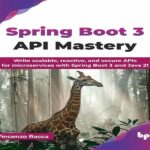



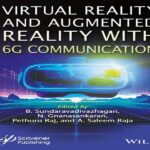

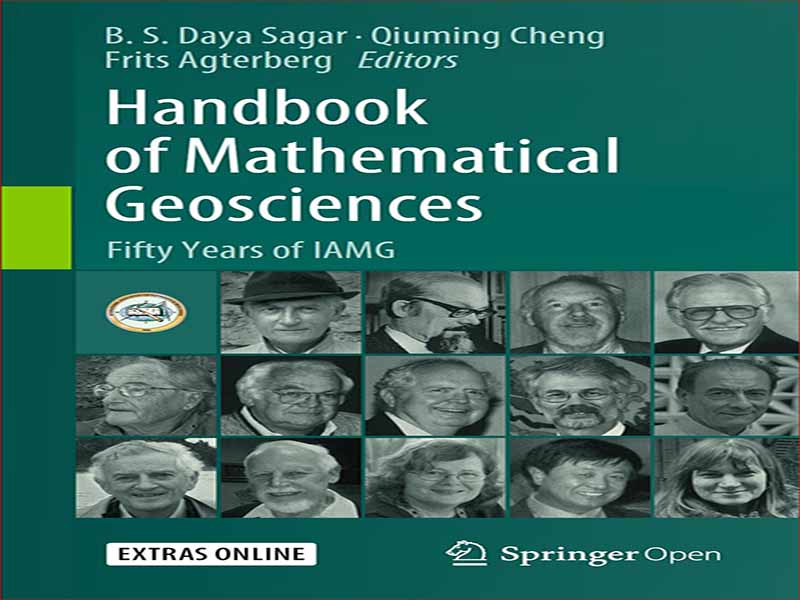

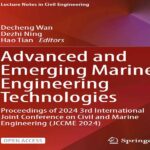
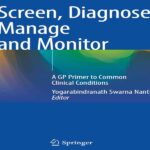
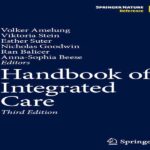


















نظرات کاربران